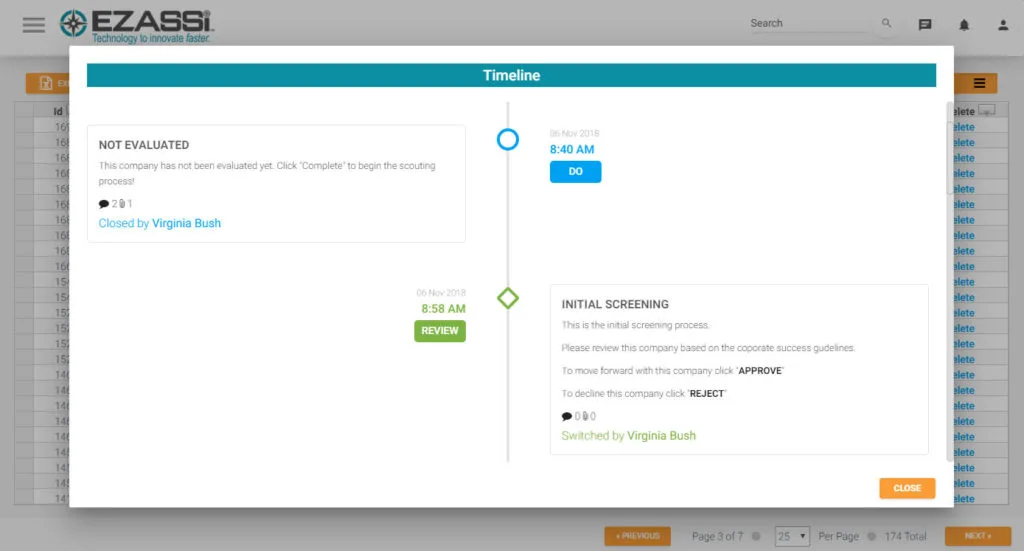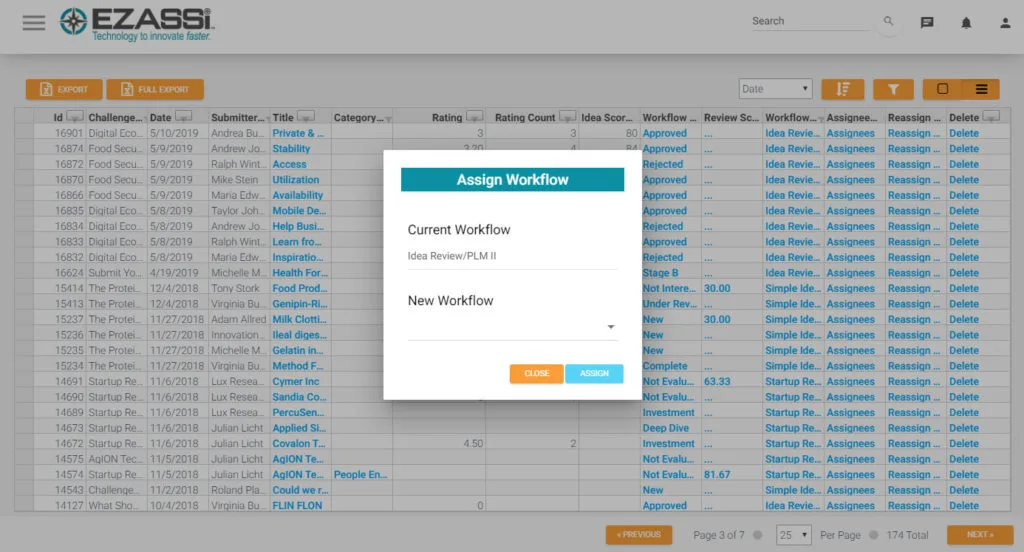Robust Innovation Management Workflow
Powerful, customizable, easy-to-use innovation management workflow.
How powerful is your innovation management system’s idea advancing workflow?
- Define the core problem to solve
- Identify real customer needs
- Generate, filter, and select ideas that directly address those needs
- Develop and test prototypes, learning quickly from early feedback
- Scale and launch solutions that actually deliver value
Why Structure Matters in Innovation Workflows

Experimentation
Validating Ideas in Practice
- Run A/B tests to see which versions of a solution resonate best with users
- Leverage usability testing to uncover practical challenges and gather user feedback
- Launch pilot programs or prototypes in controlled environments to observe actual performance
Unlocking Creative Approaches
Group Brainstorming
Gather cross-functional teams and let ideas flow freely, no matter how unconventional. Use techniques like mind mapping or the classic Post-it note wall to visually organize thoughts.
SCAMPER Technique
This method prompts you to Substitute, Combine, Adapt, Modify, Put to another use, Eliminate, or Reverse elements of an idea, often sparking unexpected innovations.
Design Thinking Workshops
Guided by frameworks championed by companies like IDEO, these workshops focus on empathy, rapid prototyping, and iterative feedback, ensuring solutions are both creative and user-centered.
External Inspiration
Look to adjacent industries, competitors, or even nature itself (biomimicry) for approaches that might not yet exist in your field. Sometimes, the best ideas are borrowed and reimagined.
Complete Control and Customization
Unlike other innovation management workflow products, our system keeps control of workflow establishment and customization where it belongs – with the client user. With our system, you can create unlimited workflows, depending on your internal structure. You can have a workflow for each product line or category, using your stage titles and customizing each one with the assigned team of reviewers.
- A to Z workflows that capture every aspect of the Product Lifecycle Management (PLM)
- Workflows that automatically eliminate unnecessary steps based on product type or design elements.
- Workflows that automatically assign projects to specific personnel or user established groups based on product type or design.
- New workflows by copying existing ones and modifying them to the new project requirements, eliminating the need to create new workflows from scratch.
- Workflows with different entry and exit points.
- Other customizations that you define.
Steps to Enhance Collaboration, Transparency, and Data-Driven Decision Making
Facilitate Dynamic Collaboration
Enable team members from different departments—and even external partners—to participate in brainstorming sessions and project development. Leading platforms like Microsoft Teams or Slack can be integrated into your workflow to open up real-time communication and idea sharing, smoothing the path from initial spark to executable plan.
Promote Transparency at Every Stage
Ensure all contributors can view the progress and status of every idea as it moves through the stage-gate process. Making review criteria and decision rationales openly accessible in your workflow platform builds trust and keeps everyone aligned. Leverage tools that provide activity snapshots for every project, similar to dashboards available in platforms like Atlassian Jira.
Standardize Evaluation and Feedback
Incorporate structured review mechanisms such as scoring, commenting, and peer voting, making use of software that supports custom evaluation rubrics. This standardization helps teams objectively assess ideas while valuing diverse perspectives, ensuring the best concepts move forward.
Integrate Data and Analytics
Build regular tracking and reporting into your workflow with embedded analytics. Platforms from SAP and PTC can provide robust reporting features, empowering you to gauge project progress, identify bottlenecks, and uncover emerging trends across your innovation portfolio.
Encourage Iterative Development
Allow ideas to be refined, merged, or split based on feedback and new data. This may mean setting up workflows that support iterative loops, rather than a linear process, ensuring your innovation efforts remain adaptive and resilient.
Automate Where Possible
Use automation features to streamline routine tasks like notifications, assignments, or reminders. For example, Zapier integrations can help reduce manual intervention, freeing your team to focus on what matters most—innovating.
Adapting Product Development Techniques to Fit Your Process
At this point in the innovation process, selecting the right development techniques is critical. You’ll want to tailor your approach to suit the specific needs of your product, service, or process. Popular frameworks such as Agile, Scrum, and Lean Startup can be applied—often in combination—to ensure you’re building effective solutions without unnecessary complexity or cost.
Agile methodologies
allow teams to work iteratively, adapt quickly to feedback, and focus on delivering value with each development cycle.
Scrum
provides a structure for managing complex projects through defined roles, regular check-ins, and clear deliverables, which helps maintain momentum and transparency.
Minimum Viable Product (MVP) development
lets you create a version with just enough features to validate with real users before investing in full-scale production.
Business Planning for Your Innovation
Building a comprehensive business plan for your innovative solution is a critical next step—one that ensures bright ideas don’t fizzle out before reaching their full potential. Here, a mix of classic and creative techniques come into play.
Use frameworks
Employ proven strategies like SWOT analysis to spot strengths, weaknesses, opportunities, and threats. The Business Model Canvas can help map out how your solution will create, deliver, and capture value.
Clarify the essentials
Identify the value proposition, zero in on your target market, outline potential revenue streams, and estimate key costs. Don’t forget to spotlight the essential resources and partnerships needed for success.
Assess viability
Financial projections and market fit aren’t just nice-to-haves—they’re core elements of strong business planning. At this point, you’ll gauge whether your idea has the legs to make it in the real world, both strategically and financially.

Innovation Management Dashboard and Graphics
Once your project has moved successfully through development, it’s time to introduce your innovation to the world. A thoughtful, well-coordinated launch sets your solution up for success and ensures it resonates with your target audience.

